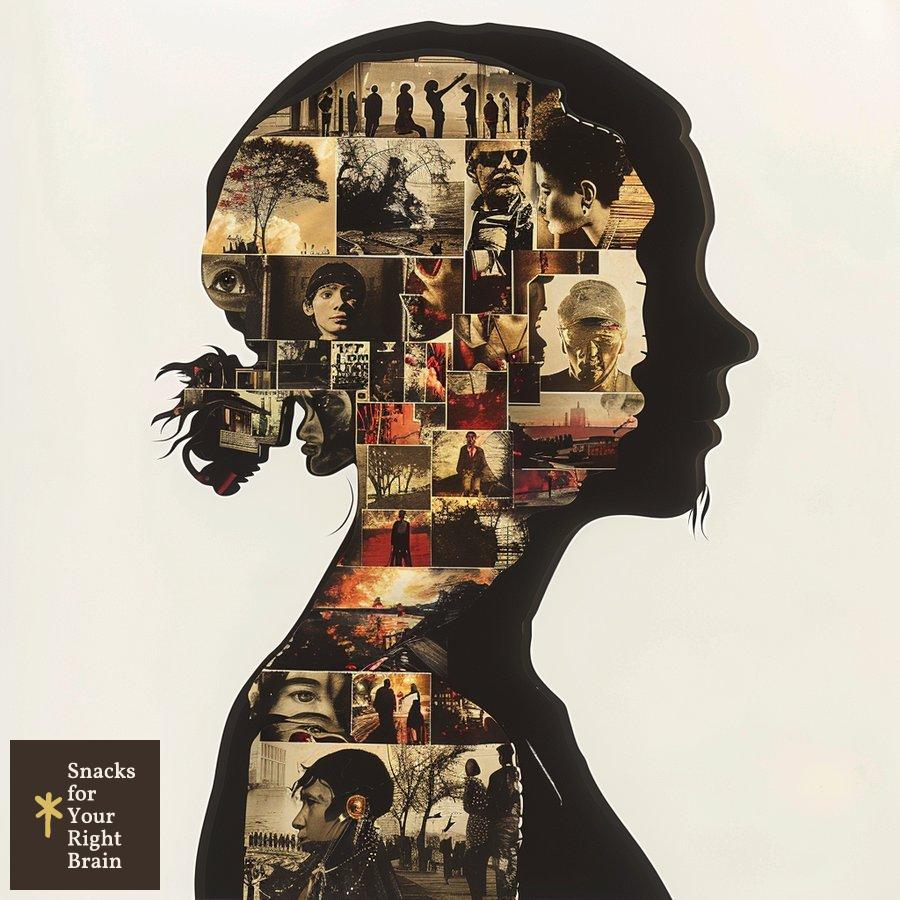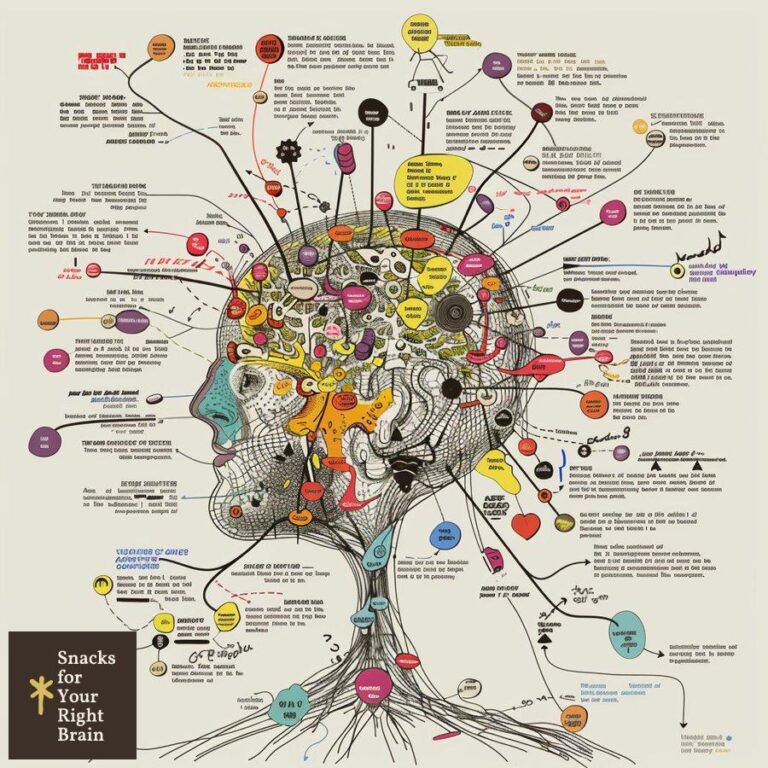What Is a Character-Driven Narrative
What defines a character-driven narrative?
A character-driven narrative is a type of storytelling that focuses primarily on the development, growth, and transformation of its central characters. In this type of narrative, the characters’ emotions, motivations, and internal conflicts drive the story forward, rather than relying solely on external events or a complex plot. The characters’ actions, decisions, and interactions with others shape the narrative, revealing their personalities, flaws, and growth over time. Character-driven stories delve deep into the human experience, exploring themes such as identity, relationships, and personal growth. The reader’s investment in the characters and their journey is crucial to the success of a character-driven narrative.
How do character-driven narratives differ from plot-driven stories?
Character-driven narratives and plot-driven stories differ in their primary focus and approach to storytelling. While both types of narratives may contain elements of character development and plot progression, the emphasis is what sets them apart.
In a plot-driven story, the primary focus is on the sequence of events, twists, and turns that make up the narrative. The characters serve to drive the plot forward, but their development is often secondary to the progression of the story. Plot-driven narratives tend to have a faster pace, with each event leading to the next and building towards a climactic resolution.
On the other hand, character-driven narratives prioritize the inner lives and personal journeys of the characters. The plot serves to reveal the characters’ motivations, emotions, and growth, rather than being the central focus. Character-driven stories often have a slower pace, with more time devoted to exploring the characters’ thoughts, feelings, and relationships. The resolution of a character-driven narrative is often more focused on the characters’ personal growth and transformation than on the resolution of external conflicts.
What are the key elements of a character-driven story?
The key elements of a character-driven story are:
- Well-developed, multi-dimensional characters
- Compelling internal conflicts and emotional journeys
- Relationships and interactions that drive the narrative
- A focus on character growth and transformation over time
- Themes that explore the human experience and condition
These elements work together to create a narrative that is emotionally engaging and intellectually stimulating for the reader. The characters must be fully realized, with distinct personalities, flaws, and motivations that drive their actions and decisions. The internal conflicts they face, such as moral dilemmas, personal struggles, or emotional turmoil, are what propel the story forward and reveal their true nature.
The relationships and interactions between characters are also crucial in a character-driven narrative. These interactions not only move the plot forward but also provide insight into the characters’ personalities and the dynamics that shape their lives. As the characters navigate these relationships and face the challenges that arise, they undergo a process of growth and transformation that is central to the story’s themes and message.
How do internal conflicts shape character-driven narratives?
Internal conflicts are the driving force behind character-driven narratives. These conflicts arise from the characters’ own thoughts, emotions, and beliefs, and they often stem from the characters’ desires, fears, and moral dilemmas. Internal conflicts can take many forms, such as:

- Moral dilemmas: Situations where the character must choose between two or more difficult options, each with its own consequences and implications for the character’s values and beliefs.
- Emotional turmoil: Intense feelings of love, hate, fear, guilt, or grief that create inner turmoil and shape the character’s actions and decisions.
- Personal struggles: Challenges that arise from the character’s own flaws, weaknesses, or past experiences, such as addiction, trauma, or self-doubt.
These internal conflicts are what drive the characters to make decisions, take actions, and ultimately grow and change over the course of the narrative. As the characters navigate these conflicts, they are forced to confront their own beliefs, values, and assumptions, and to make difficult choices that reveal their true nature.
The resolution of these internal conflicts is often more important than the resolution of external conflicts in a character-driven narrative. The characters’ ability to overcome their inner struggles and grow as individuals is what ultimately determines the success of the story and its themes.
What techniques can writers use to craft compelling character-driven stories?
Writers can use a variety of techniques to craft compelling character-driven stories. Some of the most effective techniques include:
- Deep point of view: Using a close third-person or first-person perspective to immerse the reader in the character’s thoughts, feelings, and experiences.
- Dialogue: Using dialogue to reveal character personalities, relationships, and internal conflicts.
- Backstory: Providing information about the character’s past experiences, relationships, and traumas to explain their present-day motivations and actions.
- Character arcs: Charting the character’s growth and transformation over the course of the narrative, from their initial state to their final, changed self.
- Sensory details: Using vivid sensory details to create a strong sense of place and to reveal the character’s emotional state and inner world.
- Symbolism: Using symbolic objects, settings, or events to represent the character’s inner struggles and growth.
These techniques work together to create a compelling and emotionally engaging narrative that draws the reader into the character’s world and invests them in the character’s journey. By using these techniques effectively, writers can create stories that are both entertaining and thought-provoking, exploring the complexities of human nature and the universal themes of love, loss, and personal growth.
How does deep point of view enhance character-driven narratives?
Deep point of view is a powerful technique that enhances character-driven narratives by immersing the reader in the character’s thoughts, feelings, and experiences. By using a close third-person or first-person perspective, writers can create a strong sense of intimacy and immediacy, allowing the reader to see the world through the character’s eyes and to feel what the character feels.
When writers use deep point of view, they avoid using tags like “she thought” or “he felt,” instead allowing the character’s inner voice to come through directly. This creates a sense of immediacy and authenticity, making the reader feel as if they are experiencing the story alongside the character.
Deep point of view also allows writers to reveal the character’s inner conflicts, motivations, and growth in a more nuanced and compelling way. By delving into the character’s thoughts and emotions, writers can create a deeper understanding of the character’s personality and the forces that shape their actions and decisions.
Furthermore, deep point of view can be used to create a strong sense of place and to reveal the character’s emotional state. By using vivid sensory details and focusing on the character’s perceptions and reactions, writers can create a strong sense of atmosphere and mood that enhances the emotional impact of the story.
Overall, deep point of view is a crucial technique for writers of character-driven narratives, as it allows them to create a strong emotional connection between the reader and the character, and to explore the complexities of the human experience in a more nuanced and compelling way.
Why are character arcs crucial in character-driven storytelling?
Character arcs are the backbone of character-driven storytelling. A character arc is the journey of growth and transformation that a character undergoes over the course of a narrative, from their initial state to their final, changed self. Character arcs are crucial in character-driven stories for several reasons:
-
They provide a sense of progression and development: As the character faces challenges, makes decisions, and grows, the reader can see their transformation unfold, creating a sense of progression and development that keeps the reader engaged.

-
They reveal the character’s true nature: As the character navigates their internal and external conflicts, their true nature is revealed, including their flaws, strengths, and the values that guide their actions.
-
They create emotional investment: By charting the character’s journey of growth and change, writers can create an emotional investment in the reader, who becomes invested in the character’s success and well-being.
-
They explore universal themes: Character arcs allow writers to explore universal themes such as love, loss, identity, and personal growth, creating a connection between the character’s journey and the reader’s own experiences and emotions.
-
They provide a satisfying resolution: A well-crafted character arc provides a satisfying resolution to the story, as the character reaches a new understanding of themselves and their place in the world.
In a character-driven narrative, the character arc is often more important than the resolution of external conflicts. The character’s ability to overcome their inner struggles and grow as an individual is what ultimately determines the success of the story and its themes.
How do character relationships and interactions drive the narrative?

Character relationships and interactions are crucial in driving the narrative forward in character-driven stories. These relationships reveal the characters’ personalities, motivations, and inner conflicts, and they create the emotional stakes that keep the reader engaged.
Writers can use character relationships and interactions to:
-
Reveal character personalities: The way a character interacts with others reveals their own personality traits, values, and beliefs.
-
Create emotional stakes: The characters’ relationships create emotional stakes that drive the narrative forward, as the characters face challenges and make decisions that impact their relationships.
-
Explore themes: Character relationships allow writers to explore universal themes such as love, friendship, family, and betrayal.
-
Provide conflict and resolution: Conflicts that arise between characters create tension and drive the narrative forward, while the resolution of these conflicts can lead to character growth and transformation.
-
Create a sense of community: The relationships between characters create a sense of community and belonging that enhances the emotional impact of the story.
Writers can use a variety of techniques to craft compelling character relationships, such as dialogue, body language, and shared experiences. By focusing on the emotional dynamics between characters and the way these relationships shape the characters’ actions and decisions, writers can create a narrative that is both entertaining and emotionally engaging.
What role does backstory play in developing characters?
Backstory plays a crucial role in developing characters in character-driven narratives. Backstory refers to the events, relationships, and experiences that occurred before the start of the story and that shape the character’s present-day motivations, beliefs, and actions.
Writers can use backstory to:
-
Explain character motivations: By providing information about the character’s past experiences, writers can explain why the character behaves the way they do in the present.
-
Create emotional depth: Backstory can reveal the character’s emotional wounds, fears, and desires, creating a sense of emotional depth and complexity.
-
Foreshadow future events: Hints about the character’s past can foreshadow future events and create a sense of anticipation and mystery.
-
Reveal character growth: By comparing the character’s past and present, writers can show how the character has grown and changed over time.
-
Create a sense of realism: Backstory helps to create a sense of realism and authenticity, making the character feel like a fully realized individual with a rich inner life.
However, writers must be careful not to overload the narrative with too much backstory, as this can slow down the pacing and distract from the present-day action. Instead, writers should strategically reveal backstory information at key moments, using techniques such as dialogue, flashbacks, and internal monologue to weave it seamlessly into the narrative.
By using backstory effectively, writers can create characters that are complex, multi-dimensional, and emotionally engaging, and that drive the narrative forward in compelling and meaningful ways.
How can writers balance character focus with plot progression?
Balancing character focus with plot progression is a delicate balancing act for writers of character-driven narratives. On one hand, the characters and their emotional journeys must be the primary focus of the story. On the other hand, the plot must still move forward and engage the reader’s interest.
Writers can balance character focus with plot progression by:
-
Using character actions and decisions to drive the plot: The characters’ choices and actions should propel the narrative forward, creating a sense of momentum and progression.
-
Weaving plot points into the characters’ emotional journeys: Plot points should be tied to the characters’ internal conflicts and growth, creating a sense of thematic unity.
-
Focusing on character reactions to plot events: By focusing on how the characters respond emotionally to plot events, writers can keep the focus on the characters while still moving the story forward.
-
Using character relationships to create conflict and resolution: Conflicts that arise between characters can create tension and drive the plot forward, while the resolution of these conflicts can lead to character growth and transformation.
-
Pacing the story to allow for character exploration: Writers should pace the story to allow for moments of character exploration and reflection, balancing these with moments of plot progression and action.
By using these techniques, writers can create a narrative that is both character-driven and plot-driven, engaging the reader on an emotional level while still providing a compelling and satisfying story arc. The key is to keep the characters’ emotional journeys at the heart of the narrative while still moving the story forward in meaningful and engaging ways.
What makes character-driven narratives emotionally engaging for readers?
Character-driven narratives are emotionally engaging for readers because they create a strong emotional connection between the reader and the characters. By focusing on the characters’ inner lives, emotions, and personal journeys, writers can create a sense of intimacy and immediacy that draws the reader into the story.
There are several key factors that contribute to the emotional engagement of character-driven narratives:
-
Well-developed, multi-dimensional characters: Readers are more likely to invest emotionally in characters that feel real, complex, and relatable.
-
Compelling internal conflicts: When characters face difficult choices and struggles, readers are drawn in and invested in the outcome.
-
Emotional resonance: When characters experience emotions that the reader can relate to, such as love, loss, fear, or joy, it creates a sense of emotional resonance that enhances the reader’s engagement.
-
Character growth and transformation: Seeing characters change and grow over the course of the narrative creates a sense of satisfaction and emotional payoff for the reader.
-
Thematic depth: Character-driven narratives that explore universal themes such as identity, relationships, and personal growth create a sense of meaning and significance that resonates with readers on a deeper level.
By creating characters that feel real, complex, and emotionally relatable, and by exploring their inner lives and personal journeys in a way that resonates with readers, writers can create narratives that are not only entertaining but also emotionally engaging and intellectually stimulating.
How do character-driven stories explore human nature?

Character-driven stories are uniquely positioned to explore the complexities and nuances of human nature. By focusing on the inner lives and personal journeys of their characters, these narratives delve deep into the universal experiences, emotions, and struggles that shape the human condition.
Some of the ways that character-driven stories explore human nature include:
-
Examining moral dilemmas and ethical choices: When characters face difficult choices that challenge their values and beliefs, it forces readers to confront their own moral and ethical frameworks.
-
Revealing the impact of relationships and social dynamics: The ways in which characters interact with and are shaped by their relationships and social contexts reveal the profound impact that these factors have on human development and behavior.
-
Exploring the complexities of identity and self-discovery: Character-driven stories often focus on the characters’ journeys of self-discovery, revealing the multifaceted nature of identity and the challenges of defining oneself in a complex world.
-
Depicting the impact of trauma, loss, and adversity: By portraying the ways in which characters respond to and are transformed by difficult experiences, character-driven stories shed light on the resilience and adaptability of the human spirit.
-
Revealing the universality of human emotions: By focusing on the characters’ emotional experiences, character-driven stories highlight the commonalities that unite all people, regardless of individual differences.
By delving into the inner lives and personal journeys of their characters, character-driven stories create a space for readers to reflect on their own experiences and to gain a deeper understanding of the complexities and nuances of human nature. Through these narratives, readers can explore the universal themes and struggles that shape the human condition and gain a greater appreciation for the richness and diversity of the human experience.
What are some notable examples of successful character-driven narratives in literature?
There are many notable examples of successful character-driven narratives in literature, spanning a wide range of genres and time periods. Here are a few examples:
-
To Kill a Mockingbird by Harper Lee: This classic novel focuses on the coming-of-age story of Scout Finch and her brother Jem, as they navigate the complexities of race, justice, and morality in 1930s Alabama.
-
The Kite Runner by Khaled Hosseini: This novel follows the life of Amir, a young boy growing up in Afghanistan, as he grapples with guilt, redemption, and the power of friendship and family.
-
The Catcher in the Rye by J.D. Salinger: This iconic novel centers on the story of Holden Caulfield, a cynical and disillusioned teenager who navigates the challenges of growing up in post-war America.
-
The Poisonwood Bible by Barbara Kingsolver: This epic novel follows the story of the Price family, a missionary family who moves to the Belgian Congo in the 1950s, and explores the impact of their experiences on each family member.
-
The Handmaid’s Tale by Margaret Atwood: This dystopian novel focuses on the story of Offred, a handmaid in the totalitarian society of Gilead, as she navigates the complexities of power, identity, and resistance## How can writers create multi-dimensional characters for their stories?
Creating multi-dimensional characters is crucial for crafting compelling character-driven narratives. Multi-dimensional characters are complex, flawed, and relatable, with distinct personalities, motivations, and inner lives that drive the story forward.
Writers can create multi-dimensional characters by:
-
Giving them clear goals, desires, and motivations: Characters should have clear objectives that they are striving towards, whether they are conscious or subconscious.
-
Revealing their flaws and weaknesses: Characters should have realistic flaws and weaknesses that create obstacles and challenges for them to overcome.
-
Providing them with backstory and life experiences: A character’s past experiences, relationships, and traumas shape their present-day personality and actions.
-
Allowing them to make mistakes and face consequences: Characters should make decisions and take actions that have real consequences, both for themselves and for others.
-
Giving them distinct voices and mannerisms: Characters should have unique ways of speaking, thinking, and behaving that set them apart from other characters in the story.
-
Exploring their inner thoughts and emotions: By delving into a character’s inner world, writers can reveal the complexities and contradictions that make them human.
By creating multi-dimensional characters that feel real, complex, and relatable, writers can create character-driven narratives that engage readers on an emotional level and explore the universal themes and struggles that shape the human condition.
What are the challenges of maintaining reader interest in character-driven narratives?
One of the main challenges of maintaining reader interest in character-driven narratives is the potential for a slower pace and a lack of external action or plot progression. Because the focus is on the characters’ inner lives and emotional journeys, there may be less emphasis on fast-paced action or dramatic plot twists.
Another challenge is the risk of creating characters that feel one-dimensional or unrelatable. If the characters are not well-developed or if their motivations and actions are not clearly established, readers may lose interest in their journey.
Additionally, writers must be careful not to overload the narrative with too much backstory or internal monologue, as this can slow down the pacing and distract from the present-day action.
To overcome these challenges, writers can:
-
Use external conflicts and plot points to drive the characters’ emotional journeys: By tying plot events to the characters’ internal conflicts and growth, writers can create a sense of momentum and progression.
-
Focus on creating compelling, multi-dimensional characters: By giving characters clear goals, flaws, and backstories, writers can create characters that feel real and relatable.
-
Use dialogue and action to reveal character: By focusing on how characters interact with others and respond to events, writers can reveal their personalities and inner lives without relying too heavily on internal monologue.
-
Pace the story to allow for character exploration while still moving the plot forward: Writers should balance moments of character exploration with moments of plot progression to keep readers engaged.
-
Use vivid sensory details and imagery to create a strong sense of place and atmosphere: By immersing readers in the characters’ physical and emotional environments, writers can create a sense of immediacy and engagement.
By using these techniques, writers can create character-driven narratives that are both emotionally engaging and intellectually stimulating, drawing readers into the characters’ world and keeping them invested in their journey.





